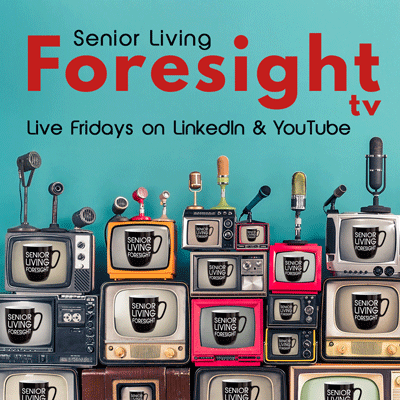By Susan Saldibar
28% of your assisted living residents will leave in 90 days. But if you can get them to stay one more day, the likelihood they’ll remain another year goes up 83%!
Your reaction?
Mine was “Why?” … then “How?”
That was pretty much Steve Moran’s reaction too while chatting with the source of those stats, John Shafaee, CEO and co-founder of ALIS (a Foresight partner). If you want the full answers to those “whys and hows,” tune in to this episode of Tech Tuesday.
These folks are blowing the roof off data and what it can do. On paper, ALIS is a custom EHR software platform dedicated to the assisted living space. But you have to love John’s Tesla comparison: “You think Tesla is just another car. But when you get in and drive it, you realize it’s a computer on wheels.”
John and his crew are not only answering the whys and hows, they’re reshaping behavior.
Some takeaways:
Use authoritative data. What if, when a caregiver entered a resident’s room, their smartphone told them everything they needed to know about that resident? We’re getting close to that point with smart beds, smart sensors, smart door locks, and so on. That more “authoritative” data is what companies like ALIS are using to change the shape of the data and how it’s acted upon.
Find your delta. John asks clients, what are the behaviors and outcomes you want? How can the data you capture, based on the behavior you observe, allow you to shape the outcomes you want? And what is that change? What’s your delta? That’s what they turn into actionable information delivered to the right person at the right time.
Understand your power metric: length of stay. I have to take some time with this one. The folks at ALIS are obsessed with length of stay. And for a lot of good reasons:
- First, don’t look at the average. It can be like when a student gets one bad grade and skews their entire average off. Instead, always look at the median. It’s way more stable and accurate.
- You have more control over length of stay than you think. Because, often it’s not about all those excuses like acuity mix or age. It’s something you can do something about.
- Data can now predict who may move out. What ALIS does is to identify residents at risk of moving out. The system then flags changes with residents and shows if and how those changes correlate to the likelihood of them moving out within the next 90 days.
- For 58% of residents with a short length of stay, there is a direct correlation to tenure of staff. In other words, the longer your staff stays, the longer your residents will stay. That’s a mind-blowing stat but it makes a lot of sense. When caregivers are happy, they stay. And they get to know the residents better. Residents are taken better care of. Everyone feels better about their lives. Everyone stays.
What about that eye-popping stat about 28% residents leaving in 90 days?
This stat makes sense too. That 90 days is an adjustment period. Residents experience a ton of stress. So, if you’re not hyper-focused on helping a resident adjust properly, you can easily lose them. John’s advice is to put an active program around those folks.
Remember, if they stay 91 days, the odds they’ll stay another year goes up 83%!
I’ve just scratched the surface her. You really need to a) watch the episode, and b) connect with ALIS. Ask how their model increases length of stay by 60+ days. Ask about the information ALIS provides. Ask how it makes staff feel more valued and give better care.
And don’t forget to ask about their length of stay study!








